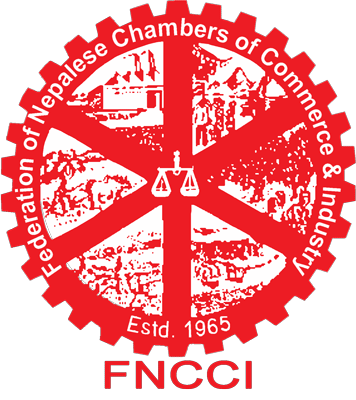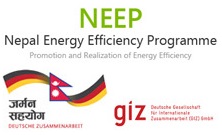Overall 29,30,047 MT is sugarcane production, 21,99,282 MT is cane used in factories,74,7755 MT is bagasse produced (Central Bureau of Statistics, 2012 statistics). Twelve plants with total capacity varying from 500-5000 tons, aggregating to 27,400 TCD, produce sugar over a period of 100-120 day season.
Typical operation feature of Nepal's Sugar Mills include:
- Bagasse per ton of Cane: 34-35 %
- Bagasse GCV: Around 2270 kCal/KG
- Sugar per Ton of cane: 9-9.5 %
- Water in Bagasse: 50 %
- Boiler Steam Parameters: Typically 32 Bar 380 deg C
- Boiler Evaporation Ratio: 2-2.5
- Steam rate of turbines: 9 to11 T/MW
- Cogen. Power Produced: To meet captive needs @ 22-25kWh/Ton cane crushed.
- Mill system: 5 Mill system steam turbine drives
- Juice concentration: Double Effect Vapor compression and 5 effect evaporation.
- Steam consumption per Ton cane crushed: 50 %
- Specific Electricity consumption: 22 kWh to 30 kWh/Ton Cane Crushed.
- National Price of Bagasse: NRs 1000/Ton
- NEA Electricity cost: NRs 230/kVA; NRs 4.20 to 8.50 per kWh (ToD)
- Share of Cogeneration power in total power used: Over 90 %
By using low and medium pressure boilers, mill drive turbines with small capacity cogeneration (cogen) turbine generator, sugar units meet their own electricity demand during the sugar season although there is a technical potential to upgrade the cogen facilities and supply electricity to the grid.
Figure 1 shows the typical prevalent configuration in Nepalese sugar industries that could be upgraded to a larger energy-efficient cogen system with the opportunity to supply electricity to the national grid.
Cogeneration potential
By economy of scale, the units with less than 5000 TCD capacity could opt for steam parameters up to 67 Bar 480 Degree Celsius and those units with and higher than 5000 TCD capacity could opt for steam parameters up to 110 Bar 535 Degree Celsius for maximizing power generation potential and benefit through revenues from utility by sale of surplus electricity, after meeting captive needs, through a judiciously structured upgrade, renew & maintenance plan.
Table 1: Cogen potential indicators for sugar plants
The upgrade and renew & maintenance plan might include, energy-efficient boiler, TG set, auxiliaries, fuel and ash handling system, water treatment plant, distributed control systems, overhead crane, civil works, ventilation, electrical evacuation, black-start diesel generator set and other necessary upgrades such as mill drive replacements/modernization, etc.
The capital expenditures for cogen plant is envisaged to be about NRs 120 million per MW, made up of around NRs 90 Million per MW for cogen upgrades and NRs 30 million/MW for process drives and other upgrades. With upgrades, the auxiliary consumption could be of the order of 15 %.
With three broad options considered, namely- Upgrade to 87 Bar steam based co-generation system for one unit, Upgrade to 67 Bar steam based cogeneration system for five units and Upgrade to 45 Bar steam based co-generation system for six units, with the same level of bagasse consumption, the potential gross generation will be of the order of 93 MW, of which, after accounting for 28.85 MW towards process needs, 14.06 MW towards auxiliary consumption, about 50.8 MW of surplus power could be available for release to utility, especially convergent with the power shortfall season of winter.
An Investment of the order of NRs 11160 Million, assuming NRs 120 Million per MW, is envisaged, while utility sale proceeds against 121920000 kWh, over 2400 hours season at NRs 8.20 per kWh as revenues would amount to NRS 999.74 Million per season, leading to a simple payback period of 11.16 years.
Unit specific Investment Grade Energy Audits (IGEA) could bring out insights/specifics and best fit technical proposals with user end cost benefits on one hand and supply side cost-benefits such as cost of avoided capacity and cost of avoided energy generation vis-a-vis costs of capacity addition and long run marginal cost of energy supply on the other.
Desirable interventions
Given the ever increasing demand supply gap situation, there is a felt need for fructifying the cogeneration potential, which may call for proactive interventions such as:
- Assessment and preparation of unit level proposals (IGEA reports) for cogeneration Upgrade schemes, addressing technical as well as cost benefits, incorporating captive needs and revenue opportunities of electricity sale to utility.
- Assessment of utility side Demand side Management benefits, in respect of avoided costs of generation/procurement, of capacity and energy.
- In case of likely un-viability of cogeneration upgrades for sale of electricity to utility in business as usual scenario with technical and financial risks perceived from user end, stakeholders from relevant Government ministries, Financial Institutions could consider coming up with suitable incentive schemes, towards cogeneration market transformation from feasibility to reality.
- The provision of incentives to cogeneration upgrades in sugar sector could possibly be considered as part of biomass energy promotion programs as well as waste to wealth programs.



